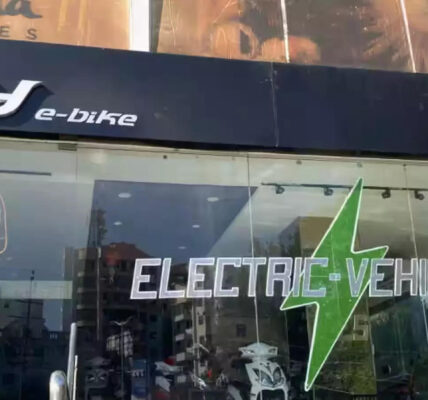The Indian government is aggressively pushing its manufacturing sector with significant incentives, particularly focusing on electric vehicles (EVs). Since launching the Production-Linked Incentive (PLI) scheme in March 2020, the government has aimed to attract foreign investments and bolster domestic production capabilities across various industries.
The PLI scheme seeks to create a comprehensive manufacturing ecosystem by offering financial incentives linked to incremental sales and local production across sectors such as electronics, pharmaceuticals, automotive, and textiles. Industry experts recognize the initiative’s potential; as reported by The Economic Times, “The PLI scheme has seen significant uptake from both Indian and multinational companies.”
Companies like Samsung, Foxconn, and India’s own automobile giants – Tata Motors, Mahindra, and Maruti Suzuki – have committed substantial investments under the PLI scheme, particularly related to electric vehicles. The PLI for the Advanced Chemistry Cells (ACC) Battery sector has alone attracted commitments worth approximately INR 18,100 crore (around $2.4 billion), which increases domestic battery manufacturing and supports the EV revolution.
According to India’s Commerce & Industry Minister, Piyush Goyal, “Investment under the PLI scheme is expected to cross ₹2 lakh crore within the next year,” as he emphasized the government’s commitment to making India a global manufacturing powerhouse. The initiative could significantly increase India’s contribution to GDP from the manufacturing sector, currently estimated at 15-17%, aiming for 25% by 2025.
Besides driving investment and manufacturing output, the PLI scheme has also demonstrated impacts on job growth. It is anticipated to create over 1.2 million jobs, particularly as companies ramp up production facilities and workforce training.
On the other hand, the other significant development is the Indian government’s support for the electric vehicle sector through the Scheme to Promote Manufacturing of Electric Passenger Cars (SMEC). Recently, the government confirmed new policies allowing existing factories to set up dedicated EV assembly lines, effectively lowering barriers for global manufacturers to enter India’s burgeoning EV market.
Companies such as Škoda-Volkswagen, Hyundai, Toyota, and Mercedes-Benz are now encouraged to invest without the need for constructing new facilities. Under SMEC, automakers can import premium EVs at concessional duties initially, provided they make substantial local investments within three years.
This was smartly positioned to support India’s vision for electric mobility, making the country more attractive to foreign manufacturers and easing compliance with localization standards for domestic production. “This policy aligns with India’s vision for electric mobility, making it easier for foreign manufacturers to join the EV market,” noted The Financial Express.
Looking to the long term, the overall impacts of the PLI and SMEC schemes could redefine India’s manufacturing and economic prospects. The government aims for these initiatives to drastically reduce dependencies on imports, create more resilient supply chains, and establish India as a global player, particularly with the exit of international supply chains from traditional hubs like China.
While both initiatives hold considerable promise, challenges remain. Issues such as implementation delays, dependence on financial incentives, skill gaps, and infrastructure development must be tackled to maintain momentum. The Indian government also acknowledges the need for significant investments in logistics, ports, and power supplies to support this ambitious manufacturing shift.
Nevertheless, if executed effectively, these incentives could lay the groundwork for sustainable manufacturing growth, driving self-reliance and bolstering India’s competitiveness on the global stage. With reports indicating the PLI scheme could add approximately $500 billion to India’s manufacturing output over the next five years, the stakes are certainly high—all eyes will be on how these ambitious targets are met.







